Greek mythology is a world full of captivating tales and awe-inspiring legends that have fascinated people for centuries. From the mythical gods and goddesses of Mount Olympus to the heroic deeds of mortals, the stories from ancient Greece continue to intrigue modern audiences. Step into the realm of Greek mythology as we embark on a journey to explore its origins, delve into the heroic adventures of legendary figures, unravel the mysteries of gods and mortals, and encounter the mythical creatures that inhabit this ancient world. Uncover the hidden secrets and captivating narratives that have shaped Western literature and culture, and discover why Greek mythology continues to captivate and inspire to this day.
Contents
- The Origins of Greek Mythology
- Heroes and Heroines
- Adventures of Gods and Mortals
- Mythical Creatures and Beasts
- Conclusion
-
Frequently Asked Questions
- Who were the Titans in Greek mythology?
- What is the significance of Mount Olympus in Greek mythology?
- Who were the most famous heroes in Greek mythology?
- What is the significance of the Odyssey in Greek mythology?
- What was the Golden Fleece in Greek mythology?
- Who were the main figures involved in the Trojan War?
- What are some notable mythical creatures in Greek mythology?
- What is the moral significance of Greek mythology?
- What role did goddesses play in Greek mythology?
- How has Greek mythology influenced modern literature and popular culture?
- References
- Frequently Asked Questions
- References
- Read More
The Origins of Greek Mythology
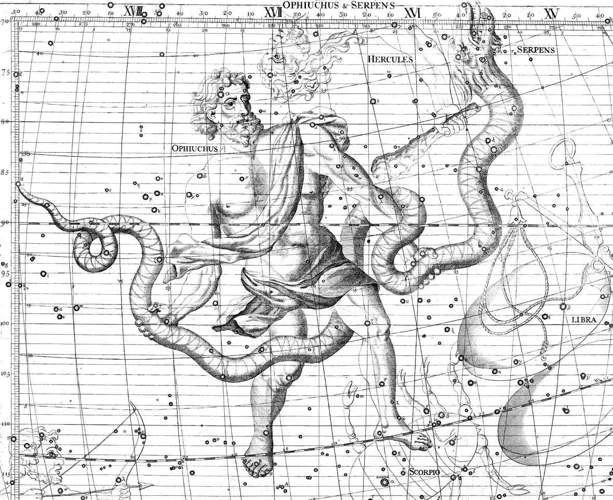
Greek mythology finds its roots in the ancient civilization of Greece, a land of gods, philosophy, and epic tales. At the heart of Greek mythology are the Titans and the Olympians, powerful beings who shaped the world and ruled over it. The Titans were the elder gods, children of Gaia (the Earth) and Uranus (the Sky), while the Olympians were the younger generation of gods who eventually overthrew the Titans in a great war known as the Titanomachy. Notable Olympians include Zeus, the king of the gods, and his siblings Hera, Poseidon, Demeter, Hades, and Hestia. These gods and goddesses, with their distinctive personalities and unique abilities, formed the basis of Greek mythology, captivating generations with tales of love, betrayal, power struggles, and heroic feats. Whether it is the tumultuous relationship between Zeus and Hera or the enthralling exploits of Hercules, the stories of Greek mythology continue to echo through the ages, leaving us spellbound and in awe of their enduring impact.
The Titans and the Olympians
The Titans and the Olympians are two distinct groups of gods in Greek mythology, each with their own roles and characteristics. Let’s take a closer look at both:
1. The Titans:
– The Titans were the elder gods, the children of Gaia (the Earth) and Uranus (the Sky).
– There were a total of 12 Titans, including powerful figures like Cronus, Oceanus, Hyperion, and Mnemosyne.
– Each Titan had their own domain and power, such as Cronus being the god of time and Oceanus ruling over the seas.
– The Titans were overthrown by their own children, the Olympians, in a grand battle known as the Titanomachy.
– The most well-known of the Titans is Cronus, who was dethroned by his son Zeus, becoming a symbol of the cyclical nature of time.
2. The Olympians:
– The Olympians were the younger generation of gods who emerged victorious in the Titanomachy and went on to rule over the world.
– Led by Zeus, the king of the gods, the Olympians resided on Mount Olympus, a mythical mountain considered the dwelling place of the gods.
– There were a total of 12 Olympians, including Zeus, Hera, Poseidon, Demeter, Athena, Apollo, Artemis, Ares, Aphrodite, Hephaestus, Hermes, and Dionysus.
– Each Olympian had their own sphere of influence and divine powers, with Zeus being the god of thunder and ruler of the heavens and Hera being the goddess of marriage and childbirth.
– The Olympians played a central role in Greek mythology, with their interactions and conflicts forming the basis of many legendary tales.
The Titans and the Olympians represent two distinct generations of gods in Greek mythology. The Titans, with their primordial powers, laid the groundwork for the Olympian gods who later claimed dominion over the world. Together, they form a rich tapestry of divine beings, each with their own unique attributes and stories. Whether it is the titan Cronus or the mighty Zeus, these gods continue to capture our imaginations and remind us of the timelessness and complexity of Greek mythology.
Heroes and Heroines
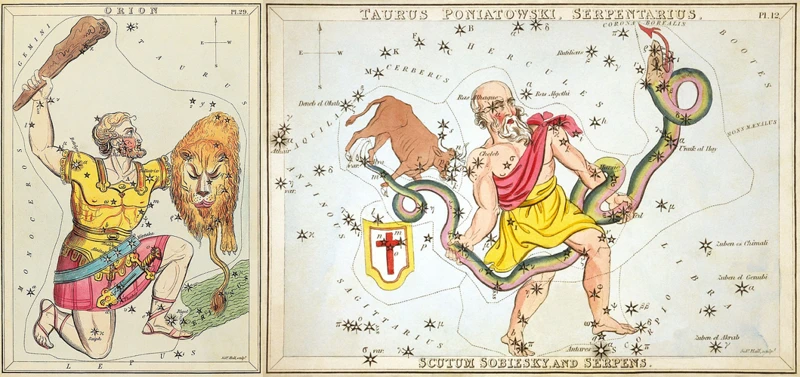
Within the realm of Greek mythology, the heroes and heroines play a significant role in shaping the epic narratives. From Perseus and his battle against the fearsome Gorgon Medusa to Hercules and his legendary Twelve Labors, these brave figures embody the ideals of strength, courage, and determination. Perseus, armed with a mirrored shield and the gifts of the gods, ventured on a perilous quest to slay Medusa, who could turn any who gazed upon her to stone. Hercules, known for his incredible strength, faced immense challenges, including defeating the Nemean Lion and capturing the Cretan Bull. These tales of heroism not only captivate our imagination but also provide valuable lessons about the human condition and the triumph of good over evil. As we delve into the adventures of these legendary heroes and heroines, we are reminded of the extraordinary feats that can be accomplished through perseverance and valor, leaving us inspired to overcome our own obstacles and achieve greatness.
Perseus and the Gorgon Medusa
Perseus and the Gorgon Medusa is a legendary tale from Greek mythology that is filled with bravery, adventure, and a dash of divine intervention. Perseus, a heroic demigod, was the son of Zeus and Danaë, a mortal princess. His journey began when he was tasked with a seemingly impossible quest: to slay Medusa, a monstrous creature with snakes for hair whose gaze turned anyone into stone. Equipped with a magical sword from the gods and a shield that rendered him invisible, Perseus ventured to the lair of the Gorgon. With careful planning and the help of Hermes and Athena, who guided him along the way, Perseus was able to approach the slumbering Medusa without being turned to stone. Utilizing his shield as a mirror to avoid direct eye contact, he decapitated the fearsome creature in one swift stroke. The severed head, still possessing its petrifying power, became a valuable weapon. Perseus would later employ Medusa’s head to turn enemies to stone, ultimately using it to rescue Princess Andromeda from the clutches of a sea monster. This triumph became one of Perseus’ most renowned exploits and cemented his status as a legendary hero. The tale of Perseus and the Gorgon Medusa serves as a testament to the triumph of courage and cunning in the face of seemingly insurmountable odds, leaving a lasting legacy in Greek mythology.
Hercules and His Twelve Labors
In the realm of Greek mythology, the tale of Hercules and his Twelve Labors is one that stands out as a testament to strength, courage, and perseverance. Hercules, the son of Zeus and a mortal woman, was a renowned hero known for his incredible feats. But as a result of a tragic event caused by the vengeful goddess Hera, Hercules was stricken with madness and committed a heinous crime, leading to his punishment of completing twelve seemingly impossible tasks.
The Twelve Labors of Hercules took him on a journey of both physical and mental endurance. The tasks included slaying the fearsome Nemean Lion and the nine-headed Hydra, capturing the Golden Hind of Artemis, and retrieving the belt of Hippolyta, the Queen of the Amazons. These labors showcased Hercules’ extraordinary strength and bravery, as he faced mythical creatures and overcame immense challenges.
One of the most well-known labors was the cleaning of the Augean stables. This seemingly impossible task required Hercules to shovel out more than 30 years’ worth of filth from the immense stables of King Augeas. Unfazed by the overwhelming amount of manure, Hercules ingeniously diverted the rivers Alpheus and Peneus to wash away the filth, completing the labor in a single day.
Another noteworthy labor was the capturing of the ferocious Cretan Bull. Hercules wrestled the beast to the ground, showcasing his strength and determination. He then brought the bull back to King Eurystheus, who was awed and terrified by the hero’s prowess.
One labor that required Hercules to venture to the Underworld was the retrieval of Cerberus, the three-headed dog guarding the gates of Hades. Hercules bravely faced the underworld’s terrors and managed to overpower the fearsome dog, eventually returning it to its rightful place.
Throughout his Twelve Labors, Hercules demonstrated not only his physical might but also his intelligence and resourcefulness. Each labor tested his abilities and character, and each triumph brought him closer to redemption.
By successfully completing his Twelve Labors, Hercules not only atoned for his past mistakes but also earned a place among the gods on Mount Olympus. His story serves as an inspiration, reminding us that even in the face of seemingly insurmountable challenges, determination and perseverance can lead to ultimate triumph.
Whether it is the iconic image of Hercules wrestling the Nemean Lion or the indomitable spirit he displayed in his quests, the tale of Hercules and his Twelve Labors continues to capture the imagination of people around the world. It reminds us that heroes can rise above their flaws and accomplish extraordinary feats, leaving a lasting legacy for generations to come.
Adventures of Gods and Mortals

The realm of Greek mythology is filled with grand adventures embarked upon by both gods and mortals. One of the most famous and enduring tales is that of “The Odyssey,” an epic journey of the hero Odysseus as he attempts to return home after the Trojan War. Along his treacherous voyage, Odysseus encounters mythological creatures, battles supernatural forces, and faces numerous challenges. Another captivating adventure is the story of Jason and the Argonauts, who set out on a quest to find the legendary Golden Fleece. Their expedition tests their courage, wit, and resolve as they navigate treacherous waters, encounter mystical beings, and overcome impossible obstacles. And, of course, the Trojan War stands as a pivotal event in Greek mythology, where heroes like Achilles, Agamemnon, and Hector clash in a tragic conflict that shapes the fate of both gods and mortals. These extraordinary adventures capture the imagination and offer valuable insights into the complexities of human nature and the allure of divine intervention.
The Odyssey: An Epic Journey
In the realm of Greek mythology, one of the most renowned and captivating tales is that of “The Odyssey: An Epic Journey.” This epic poem, attributed to the legendary poet Homer, follows the adventures of Odysseus, the King of Ithaca, as he strives to return home after the Trojan War. The Odyssey recounts Odysseus’ ten-year journey fraught with numerous trials and tribulations. From facing the wrath of the gods to encountering seductive nymphs and terrifying monsters, Odysseus must navigate through perilous waters and overcome unimaginable obstacles to reunite with his loyal wife, Penelope, and reclaim his rightful place as ruler of Ithaca.
One of the standout episodes of The Odyssey is the encounter with the Cyclops Polyphemus. Odysseus and his men find themselves trapped in the cave of the one-eyed giant, facing certain doom. Through his cunning and resourcefulness, Odysseus devises a plan to blind Polyphemus and escape. This episode exemplifies Odysseus’ intelligence and strategic thinking, highlighting his ability to outwit even the most formidable adversaries.
Another memorable aspect of the epic journey is Odysseus’ visit to the island of the enchantress Circe. Circe turns several of Odysseus’ men into animals but is eventually outsmarted by the hero, who becomes her lover and convinces her to release his crew. This episode not only showcases Odysseus’ wit but also explores themes of temptation, transformation, and the consequences of succumbing to one’s desires.
Throughout The Odyssey, Odysseus encounters a multitude of other challenges, including navigating the treacherous waters of the sea, evading the deadly song of the Sirens, and resisting the allure of the Lotus-eaters. Despite facing constant setbacks and trials, Odysseus remains steadfast in his determination to return home, illustrating the enduring power of hope and the indomitable spirit of the human condition.
“The Odyssey: An Epic Journey” is not only a thrilling adventure but also a profound exploration of the human experience. It delves into the themes of heroism, loyalty, perseverance, and the consequences of one’s actions. The epic poem has left an indelible mark on literature and continues to inspire countless adaptations and interpretations in various forms of media.
As we reflect on “The Odyssey: An Epic Journey,” we are reminded of the timeless lessons and insights it imparts. It serves as a reminder of the resilience of the human spirit and the transformative power of embarking on a journey that tests our limits and shapes our identity. Odysseus’ trials and triumphs continue to captivate readers and serve as a testament to the enduring power of storytelling in Greek mythology.
Sources:
– Ophiuchus Relationships: The 13th Zodiac Sign
Jason and the Quest for the Golden Fleece
Jason and the Quest for the Golden Fleece is one of the most renowned and heroic stories in Greek mythology. The tale follows Jason, a young and ambitious hero, on his daring expedition to retrieve the coveted Golden Fleece. The quest was no easy task, as the fleece was guarded by a fearsome dragon named Ladon and was located in a distant land called Colchis. To assist him in this treacherous adventure, Jason gathered a group of brave and skilled individuals known as the Argonauts, each with their own unique abilities and strengths.
Guided by the sorceress Medea, who had fallen in love with Jason, the group embarked on an arduous journey through perilous seas and treacherous lands. They encountered numerous challenges and faced deadly adversaries along the way, including the deadly Harpies, the clashing rocks known as the Symplegades, and the fire-breathing bulls of King Aeetes.
With Medea’s magical aid, Jason successfully outwitted and defeated each obstacle. He tamed the fierce bulls, sowed the teeth of a dragon to defeat a fearsome army of warriors, and even managed to procure the Golden Fleece itself. However, his triumph was not without consequence, as he faced the wrath of King Aeetes and had to flee with Medea, leaving a trail of turmoil and tragedy behind.
The tale of Jason and the Quest for the Golden Fleece embodies the themes of heroism, adventure, and the pursuit of greatness. It showcases the determination and courage of Jason in his pursuit of a grand prize, and the sacrifices he and his companions had to endure to achieve their goals. This legendary quest has inspired countless works of literature, art, and entertainment throughout history, cementing its place as one of the most iconic and enduring stories in Greek mythology.
The Trojan War: Heroes and Tragedy
The Trojan War, one of the most famous events in Greek mythology, is a tale of heroes, tragedy, and the destructive power of war. It all began when Paris, a prince of Troy, abducted Helen, the wife of King Menelaus of Sparta. This act sparked a conflict that would last for ten years, resulting in immense heroism and devastating loss. The war witnessed the bravery and valor of iconic Greek heroes such as Achilles, known for his invulnerability except for his heel, and Hector, the courageous Trojan prince. The gods and goddesses also played a significant role in the Trojan War, interfering with mortals and shaping the outcome of battles. The war culminated in the infamous Trojan Horse, a cunning ruse devised by the Greeks to infiltrate the impenetrable walls of Troy. Ultimately, the city of Troy fell, bringing about the tragic deaths of many heroes on both sides. The Trojan War is a poignant reminder of the destructive consequences of war, portraying the triumphs and tragedies that befall those caught in its grip. Explore the intricate tales and profound themes of this legendary conflict and uncover the lessons it imparts about the human condition and the perils of hubris. For further reading, you can check out our article on the influence of Greek mythology personalities in the entertainment industry at /ophiuchus-entertainment-industry-personalities/.
Mythical Creatures and Beasts
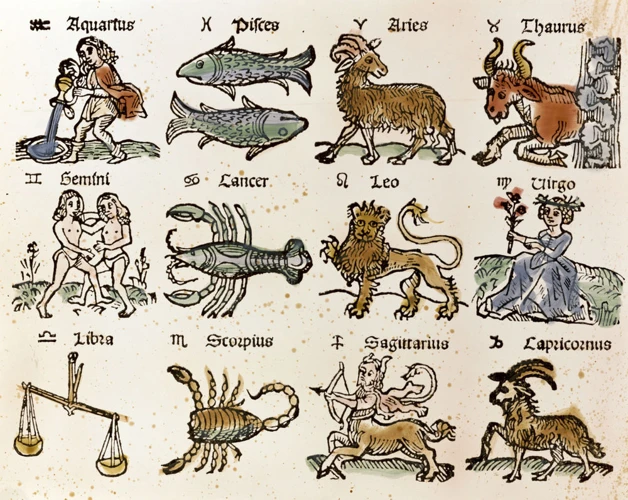
Mythical creatures and beasts populate the vast and enchanting world of Greek mythology. From fearsome monsters to majestic creatures, these beings add an element of wonder and danger to the tales of gods and mortals. One such creature is the Chimera, a fearsome amalgamation of a lion, goat, and serpent, breathing fire and striking fear into the hearts of those who encountered it. Another enigmatic creature is the Sphinx, a mystical being with the body of a lion and the head of a human, known for its riddles and tests of intellect. And who can forget the majestic Pegasus, the winged horse that became a symbol of inspiration and freedom. These mythical creatures and beasts add depth and intrigue to the already captivating world of Greek mythology, proving that imagination knows no bounds when it comes to crafting fascinating narratives.
The Fearsome Chimera
The Fearsome Chimera is a mythical creature that captures the imagination with its extraordinary features. According to Greek mythology, the Chimera is a monstrous creature with the body and head of a lion, a snake for a tail, and a goat’s head emerging from its back. Its appearance alone is enough to strike fear into the hearts of anyone who encounters it. Legend has it that the Chimera was born from the union of Typhon, a fearsome serpent-like monster, and Echidna, a half-woman, half-serpent creature. The Chimera’s fiery breath and venomous bite were its most deadly weapons, capable of causing destruction and terror. Its insatiable hunger for human flesh led to the creation of heroic tales, with warriors endeavoring to hunt down and slay this formidable monster. One such hero was Bellerophon, who, with the help of the winged horse Pegasus, managed to overcome the Chimera. The story of the Chimera serves as a cautionary tale of the dangers of hubris and the triumph of heroism over adversity. Its presence in Greek mythology underscores the eternal struggle between good and evil, reminding us of the power of bravery and determination in the face of seemingly insurmountable challenges.
The Enigmatic Sphinx
The Enigmatic Sphinx, a mystical creature of Greek mythology, is perhaps one of the most enigmatic and intriguing figures to grace ancient legends. Often depicted as a creature with the body of a lion and the head of a human, the Sphinx possessed an air of mystery that captivated the imaginations of those who encountered her. One of the most famous stories involving the Sphinx centers around the city of Thebes and a riddle that she posed to anyone who wished to pass. The riddle went: “What creature walks on four legs in the morning, two legs at noon, and three legs in the evening?” Many tried and failed to solve the Sphinx’s riddle, and those who failed were met with a terrible fate, consumed by the ferocious creature. It was not until the hero Oedipus came along that the riddle was finally solved. Oedipus correctly answered that the creature was a human, who crawls on hands and knees as a baby, walks upright on two legs in adulthood, and uses a cane in old age. With the riddle solved, the Sphinx met her demise, and the city of Thebes rejoiced. The enigmatic Sphinx serves as a symbol of mystery and wisdom, a reminder of the challenges and tests that heroes must face on their mythical journeys.
The Majestic Pegasus
The Majestic Pegasus, a creature of Greek mythology, is a symbol of grace, freedom, and untamed beauty. Pegasus is often depicted as a magnificent winged horse, with pure white feathers and a flowing mane. Born from the blood of the slain Medusa, the Gorgon, Pegasus emerged as a captivating and powerful being. Renowned for its ability to soar through the skies, Pegasus became a loyal companion to heroes and gods alike. The most famous tale involving Pegasus is that of Bellerophon, the mortal hero who tamed and rode the majestic creature. With Pegasus by his side, Bellerophon accomplished incredible feats, including defeating the fire-breathing Chimera. Pegasus also played a crucial role in transporting Zeus’s thunderbolts, serving as a messenger of the gods. In art and literature, Pegasus has come to symbolize inspiration and the pursuit of dreams. This mythical creature continues to captivate our imagination, reminding us of the power of soaring above earthly limits and embracing the extraordinary.
Conclusion
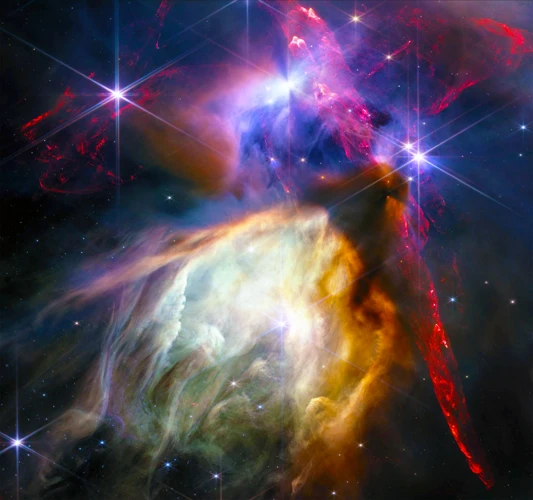
In conclusion, the rich tapestry of Greek mythology has left an indelible mark on human culture and imagination. The legends and stories have become a timeless source of inspiration, not only in literature and art but also in our understanding of the human condition. The myths explore universal themes of love, honor, jealousy, and the eternal struggle between mortals and the divine. Greek mythology has given us iconic figures like Zeus, Athena, Aphrodite, and Apollo, who embody different aspects of human nature and serve as allegories for our own strengths and flaws. It has also offered us epic tales of heroism and adventure, showcasing the triumph of the human spirit against insurmountable odds. These myths continue to captivate us, reminding us of our own capacity for greatness and the complexities of the world we inhabit. Their significance lies not only in their entertainment value but in the profound lessons they impart about morality, destiny, and the power of storytelling itself. As we delve into the legends of Greek mythology, we embark on a quest to understand our own humanity and find meaning in the timeless myths that have shaped our collective consciousness. They serve as a testament to the enduring power of mythology and the eternal relevance of the stories that have captivated countless generations. Through Greek mythology, we glimpse the universal truths of the human experience, and that is why these tales will continue to fascinate and inspire for generations to come.
Frequently Asked Questions
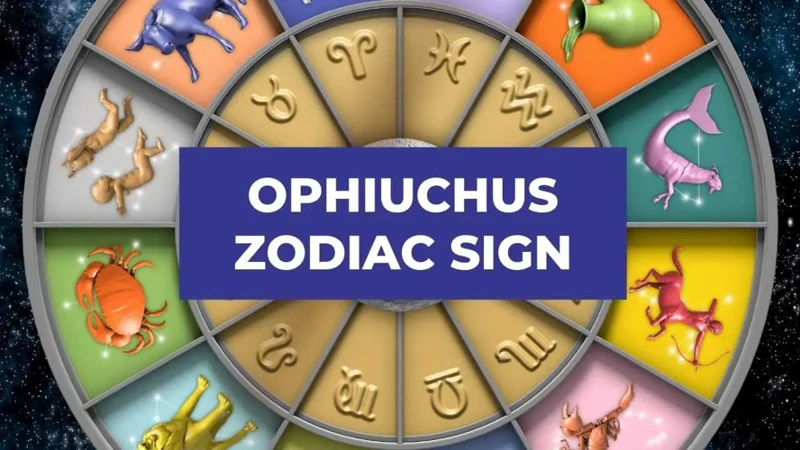
Who were the Titans in Greek mythology?
The Titans were a group of powerful deities who ruled before the Olympian gods. They were the children of Gaia, the Earth, and Uranus, the Sky. The most well-known Titans include Cronus, Rhea, Hyperion, and Atlas, among others.
What is the significance of Mount Olympus in Greek mythology?
Mount Olympus is regarded as the dwelling place of the Olympian gods and goddesses. It is a legendary mountain in Greece, shrouded in myth and believed to be the meeting place of the gods, where they made decisions and engaged in divine affairs.
Who were the most famous heroes in Greek mythology?
Greek mythology is abound with legendary heroes, but two of the most famous ones are Perseus and Hercules. Perseus is known for slaying the Gorgon Medusa, while Hercules is renowned for his Twelve Labors, a series of tasks he had to complete as punishment for his deeds.
What is the significance of the Odyssey in Greek mythology?
The Odyssey is an epic poem attributed to the ancient Greek poet Homer. It follows the protagonist Odysseus on his journey home after the Trojan War. It is considered one of the greatest works of literature and showcases the challenges faced by mortals and the interventions of gods.
What was the Golden Fleece in Greek mythology?
The Golden Fleece was the skin of a magical, golden-hued ram. In Greek mythology, Jason and the Argonauts embarked on a quest to find and retrieve the Golden Fleece. It symbolized power and kingship and was guarded by a fearsome dragon.
Who were the main figures involved in the Trojan War?
The Trojan War was a legendary conflict between the Greeks and the Trojans. The main figures involved include Achilles, Hector, Paris, Helen of Troy, and Agamemnon. It is believed their actions and the war itself were driven by the gods and goddesses.
What are some notable mythical creatures in Greek mythology?
Greek mythology is populated by a multitude of fascinating creatures. Some notable ones include the Chimera, a fire-breathing monster with a lion’s head, a goat’s body, and a serpent’s tail; the Sphinx, a creature with the head of a human and the body of a lion; and Pegasus, a winged horse who aided heroes in their quests.
What is the moral significance of Greek mythology?
Greek mythology often conveyed moral lessons and explored the complexities of human nature. These stories highlighted virtues such as courage, wisdom, and loyalty, while also cautioning against hubris and the consequences of defying the gods.
What role did goddesses play in Greek mythology?
Goddesses held significant roles in Greek mythology, representing various aspects of life. For example, Hera was the queen of the gods and the goddess of marriage, while Athena was the goddess of wisdom and warfare. Aphrodite, the goddess of love and beauty, also played a prominent role.
How has Greek mythology influenced modern literature and popular culture?
Greek mythology has had a profound impact on modern literature, art, and pop culture. It has inspired countless works of literature, such as “The Iliad” and “The Odyssey,” as well as plays and films. It has also influenced the naming of constellations, planetary bodies, and astrological signs.
References
- What is the best way to experience and explore the Greek …
- Exploring Greek Mythology: Unravel the Legends of …
Frequently Asked Questions

What is Greek Mythology?
Greek Mythology refers to the collection of ancient Greek legends, stories, and myths that were passed down through generations. These tales involve the gods and goddesses, heroes and heroines, and mythical creatures that were believed to have inhabited the world in ancient times.
Who were the Titans?
The Titans were a powerful group of ancient deities who ruled over the world before the Olympians. They were the children of the primordial deities, Uranus and Gaia. The Titans were eventually overthrown by the Olympians in a great battle known as the Titanomachy.
Who were the Olympians?
The Olympians were a group of twelve major gods and goddesses who reigned over Mount Olympus, the highest mountain in Greece. These deities included Zeus, Hera, Poseidon, Hades, Aphrodite, Apollo, Artemis, Ares, Athena, Hermes, Hephaestus, and Dionysus. They were known for their immense powers and their influence over various aspects of life.
Who was Perseus?
Perseus was a legendary hero in Greek mythology. He is best known for his quest to slay the Gorgon Medusa, whose gaze turned people to stone. With the help of the gods and various magical artifacts, Perseus successfully defeated Medusa and rescued Princess Andromeda from a sea monster.
What were Hercules’ Twelve Labors?
Hercules, also known as Heracles, was a renowned hero in Greek mythology. As a result of his madness induced by the goddess Hera, Hercules was tasked with completing twelve difficult labors. These labors included killing the Nemean Lion, capturing the Golden Hind, and retrieving the Apples of Hesperides, among other legendary feats.
What is The Odyssey?
The Odyssey is an epic poem attributed to the ancient Greek poet Homer. It tells the story of the hero Odysseus and his ten-year journey to return home after the Trojan War. Along the way, Odysseus encounters numerous obstacles, including mythical creatures and vengeful gods, making it a tale of adventure and perseverance.
What was the Quest for the Golden Fleece?
The Quest for the Golden Fleece was an epic voyage undertaken by Jason and the Argonauts. Their mission was to retrieve the magical Golden Fleece, which was believed to bring prosperity and kingship. The journey was perilous, filled with challenges and encounters with mythical creatures, but Jason successfully obtained the Golden Fleece with the help of the goddess Athena.
What was the Trojan War?
The Trojan War was a legendary conflict between the Greeks and the Trojans. It was triggered by the abduction of Helen, the wife of King Menelaus of Sparta, by the Trojan prince Paris. The war lasted for ten years and was characterized by famous battles, heroic deeds, and tragic events, including the use of the Trojan Horse.
What is a Chimera?
The Chimera was a terrifying creature from Greek mythology. It had the body of a lion, the head of a goat protruding from its back, and a serpent as its tail. The Chimera breathed fire and was known for its ferocity. It was eventually slain by the hero Bellerophon with the help of the winged horse Pegasus.
What is a Sphinx?
The Sphinx was a mythical creature with the body of a lion and the head of a human or a ram. It was known for its enigmatic riddles, posing a challenge to those who passed by. In the famous legend of Oedipus, he successfully answered the Sphinx’s riddle, causing the creature’s demise.
References
- Greek Mythology: Explore the Myths of the Gods, Titans …
- Exploring Greek Mythology: Unravel the Legends of …






